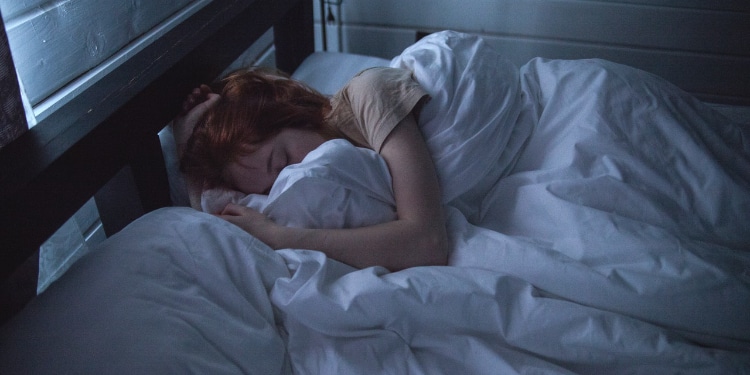











Hebephilia refers to the primary or exclusive adult sexual interest in pubescent individuals ranging from ages 11-14. Hebephilia is differentiated from pedophilia, which involves exclusive sexual attraction to prepubescent children (up to age 13 according to diagnostic criteria). Both of these conditions are noted as types of chronophilia, sexual preference for a specific physiological appearance related to age. Ephebophilia is distinguished by sexual attraction to individuals in later adolescence, ages 15-19.

The World Health Organization classifies pedophilia as a mental disorder and emphasizes the importance of distinguishing between those with pedophilic tendencies and those who commit sexual offenses against children. This distinction is crucial for understanding the potential for preventive therapeutic measures to support non-offending individuals.
These paraphilia distinctions were made after researchers recognized patterns of age preferences in individuals with these conditions. The term hebephilia was first coined by Hammer and Glueck in 1955 in their forensic work researching sex offenders at Sing Sing prison (Hammer & Glueck, 1957). Anthropologist Paul Benedict also used the term to distinguish pedophiles from sex offenders who targeted adolescent victims. Multiple studies assessing the patterns of hebephilic and pedophilic men suggest that the sexual attraction to children falls on a continuum, rather than a polarized spectrum (Jahnke et al., 2022).
The cause of hebephilia has also been explored. Scientists from the Centre of Addiction and Mental Health in Toronto have studied various correlates with hebephilia, including brain structure, handedness, IQ, educational level, height, and various atypical factors of physical development (Blanchard et al., 2008). While the prevalence of hebephilia is uncertain, it has been suggested that there are more individuals with sexual interest in pubescent teens than may be commonly believed. Due to the stigma and legal consequences, those who have these sexual desires are unlikely to uncover this.
Hebephilia is defined as a sexual preference for pubescent children, typically those between the ages of 11 and 14. This condition is distinct from pedophilia, which involves a sexual preference for prepubescent children. Individuals with hebephilia experience a strong and persistent sexual interest in pubescent children, often accompanied by a desire for sexual contact. The age range associated with hebephilia is approximate due to the variability in the onset and completion of puberty. This preference for pubescent children is a key characteristic that differentiates hebephilia from other sexual disorders.
The causes of hebephilia are not fully understood, but research suggests that it may result from a combination of biological, psychological, and environmental factors. Some potential risk factors for developing hebephilia include a history of childhood trauma or abuse, a family history of sexual disorders or mental illness, and exposure to child pornography or other forms of sexual exploitation.
Social isolation or difficulties with social relationships can also contribute to the development of hebephilia. Additionally, individuals who lack empathy or an understanding of the harm caused by sexual offending may be at higher risk. Understanding these risk factors is crucial for developing effective prevention and treatment strategies.
Whether this condition qualifies as a mental disorder has been a source of controversial debate. There was discussion about whether or not to include Hebephilia in the DSM-5, the official criteria for mental health disorder diagnosis. Critics strongly propose the risks of having hebephilia as a diagnostic category due to the risk of it being highly misused in the legal system.
In addition, at a general level, some argue that the issue of sexual attraction to pubescent teens is not as unusual or uncommon as pedophilic behaviors. In many countries, the age of consent has been 13 until recently. Also, in some cultures, it is acceptable, required, or encouraged for young teens to marry.
Critics suggest feeling sexual attraction to pubescent teens is not a sign of mental illness, yet to act on such impulses is a crime that is deserving of punishment. Their position is that the proper consequence for breaking the law and violating the rights of the vulnerable is a prison sentence, not the safe haven of a mental hospital.
The criteria proposed for the DSM-5 involved an adult who “for six or more months, experienced sexual attraction to prepubescent or pubescent children that was equal to or greater than their attraction to adults, and who also either found the attraction distressing, used child pornography or had sought sexual stimulation from a child, on at least three occasions in the case of the hebephilic type.” The adult identified must be aged 18 or older and are at least five years older than the children or teens to whom they are experiencing sexual attraction (Wakefield, 2011).
The criminal justice system faces significant challenges in handling cases involving hebephilia, highlighting the legal ambiguities and tensions between mental health understandings and criminal justice approaches. The addition of Hebephilia to the DSM-5 was rejected, but the definition of pedophilia has been expanded to include pubescent children.

This intersection of mental health diagnoses and legal statutes reveals the complexities in determining whether certain behaviors should be categorized as mental disorders or criminal offenses. Those who support including hebephilia in the DSM-5 suggest it qualifies as a mental health disorder due to the level of emotional distress experienced by those with symptoms (Blanchard et al., 2008).
Some signals that one is experiencing hebephilia would include the following symptoms:
Diagnosing hebephilia can be challenging, as it requires a comprehensive assessment of an individual’s sexual interests, behaviors, and attitudes. Mental health professionals may use a variety of tools and techniques to assess for hebephilia. These can include clinical interviews and questionnaires designed to elicit information about sexual preferences and behaviors.
Psychological assessments, such as the penile plethysmograph, may be used to measure sexual arousal patterns. Behavioral observations and reports from others, as well as a thorough review of an individual’s history and behavior patterns, are also important components of the diagnostic process. Accurate diagnosis is essential for providing appropriate treatment and support.
Hebephilia is a significant risk factor for child sexual abuse, as individuals with this preference may be more likely to engage in sexual offending behaviors. Child sexual abuse can have serious and long-lasting consequences for victims, including emotional trauma, mental health problems, and difficulties with social and sexual relationships.
Addressing hebephilia and other sexual disorders through evidence-based treatments and prevention programs is essential to reduce the risk of child sexual abuse. By providing appropriate interventions and support, it is possible to help individuals with hebephilia manage their sexual interests and prevent harm to vulnerable children.
Whether or not there are official diagnoses available, treatments for hebephilia must be identified. Those who act on such urges can be charged in court and face criminal consequences. It would make sense that preventative programs be made available for those who experience such sexual attraction and the distress and shame that can come with it to help avoid acting on such urges.
While there is not a treatment protocol strongly endorsed by scientific research, treatment methodologies can include:
Individuals with hebephilia may not seek treatment until they are forced or the situation requires it due to legal implications. Education and awareness may help more individuals come forward to get help before they act out on vulnerable victims. If you or someone you know is struggling with this challenge, seek help from a mental health professional.
Sources